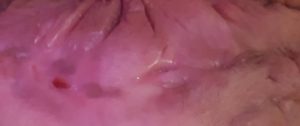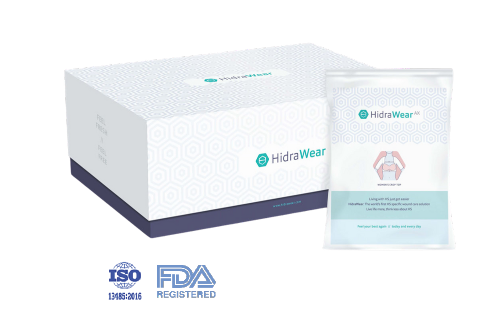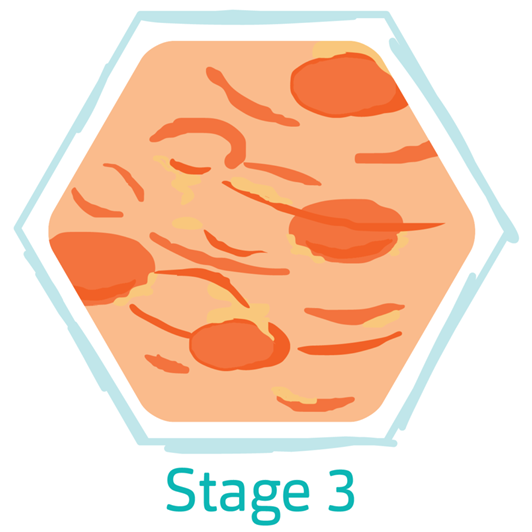So far, the symptoms, diagnosis and treatment of HS stages 1 & 2 have been described in previous articles. However, hidradenitis suppurativa stage 3 is the focus of this blog. Firstly, to recap, HS is a chronic skin disease that causes nodules called lesions to form on the skin. It affects many parts of the body. HS is most common in the following areas:
• underarms,
• groin,
• perianal area
• buttocks
• under the breasts
Whether it is stage 1, 2 or hidradenitis suppurativa stage 3, it can certainly occur in these areas, but also on other areas of the body, such as the back, legs, arms and chest.
The lesions resemble boils. They burst to expel pus with an unpleasant smell. As we said, doctors measure the disease severity with the Hurley stage 1-3 scale. With one being the mildest form of the disease. Stage two is the moderate form of the disease.
If you missed the post on Hurley stage 1, you can read it first here. And if you missed the post on Hurley stage 2, you can read it here. Today we are talking about stage 3, severe HS.
Stage 3 Hidradenitis Suppurativa
HS stage 3 is categorised as severe. It is characterised by widespread lesions and sinus tracts. Boils and abscesses occur usually in multiple sites. And the sinus tracts that have been formed from repeated scarring become interconnected.
Stage 3 can be extremely painful, and there is often no healthy skin between lesions. This means that there’s no room for the skin to heal and so wounds may stay open.

Diagnosis of Stage 3
Because so much tissue is affected, a doctor should determine HS on examination. In hidradenitis suppurativa stage 3, sinus tracts are prominent, and there may be many infections.
A doctor may take a sample of the pus to send for testing. Although this is to rule out other infections. The doctor will also ask you some questions to collect a medical history. These might include when your symptoms began and the course your symptoms have taken.
Treatment of Stage 3 Hidradenitis Suppurativa
Unfortunately, there is no cure for HS. It can certainly be difficult to treat. However, there are treatment options available. So please don’t lose hope. Doctors and researchers are working hard to find solutions. And already there are treatment guidelines. These guidelines outline the best treatment for HS depending on the severity of the disease. And a good HS doctor will be aware of the guidelines. Treatment for Stage 3 HS can be quite intense but can yield good results. Below outlines the most common treatments for stage 3 HS.
Medical and Surgical Treatment
Antibiotics may be prescribed to reduce inflammation or fight infection. Biologic treatments that alter the function of the immune system may be prescribed also.
However, because of the number of flare-ups and the lack of healthy skin, surgery may be necessary. Surgery for HS is called excision, and there are three types.
Wide excision removes both affected skin and the tissue around it. The aim of wide excision is to prevent the disease from spreading. A person who undergoes wide excision may also need a skin graft to replace the tissue removed.
Tissue-sparing excision removes only the affected tissue. And local excision removes individual lesions.
An alternative to surgery is laser treatment. This involves using a hot beam of light to remove lesions.
You should be aware that not all types of treatment are available in every country. And in some cases, HS reoccurs even after surgery. While other cases may go into remission.
Treatment is not a one size fits all. So, your consultant can tell you about which ones are available to you. As well as which options might be right for you.
All stages of hidradenitis suppurativa can impact your daily life, so it is important to have some support. There are many support groups for HS online, you can join the HidraWear support group here

Self-pay or Insurance- you decide!
As well as our self-pay shop, HidraWear is now also widely available through a broad range of Insurance providers including Medicare and Medicaid. It can be prescribed by your provider, billed directly to your insurer and delivered right to your door.


